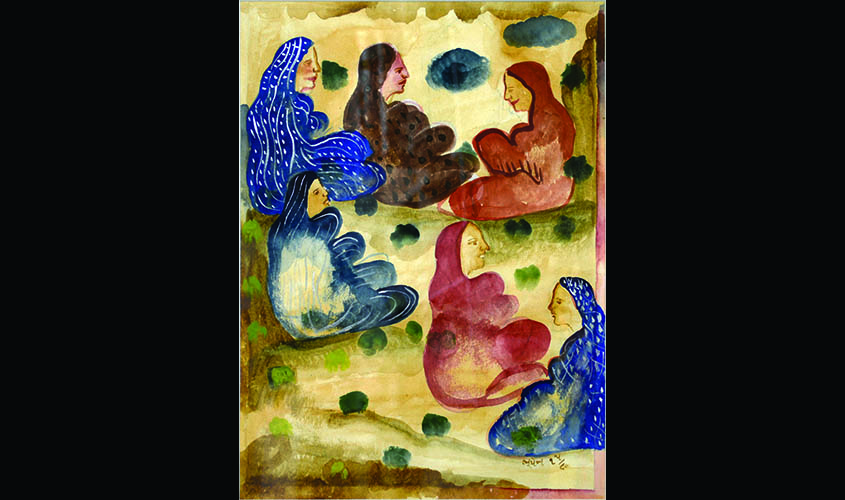Bhupen Khakhar established himself among the very few Indian artists who have been celebrated both within the country, as well as internationally during his lifetime. The works of the deceased artist, titled Liberation / Revelation / Representation, at Swaraj Art Archives in Noida, will showcase realities of the everyday and personal fantasies fuse to form an inimitable language unique to the artist. One must also not to forget that he lived on his own terms and his artworks reflected his personal preferences and priorities.
People who have been close to him have been privileged to have closely observed Bhupen’s evolving oeuvre in the various stages of his career and life. It is an experience of the evolution of his pictorial language, his persona, and his motivation behind the creations.
Large parts of his works are confessional and autobiographical making it progressive, controversial and cathartic. Elements of kitsch make his art relatable to the popular. His works may be perceived as a bridge linking the reality of everyday and the inner world of emotions, feelings and prejudices.
Khakhar’s palette primarily consists of loud colours. However, careful tonal gradation with a generous amount of watery treatment considerably balances the effect of the saturated hues. The meticulous details reflect an influence of Indian miniature paintings in the approach. He intelligently chose his themes revalidating tradition and evolved a personal language synonymous with the provocateur, the titillator, and the evocator.
Khakhar’s oeuvre mapped a constellation of sexuality, subjectivity and sociability that was not limited to his gay period; or private pictures of the 80’s and 90’s. A queer beauty was evident in the strange kinship and surreal spaces of his earlier paintings. This queerness was a form of aesthetic and political critic that he refined in his late works. To see queerness as a mere function of the artist biography would be to discount his achievements and to misunderstand its function. Khakhar’s art truly reinvented modernism and made it so much more contextual to our land and culture. In this fashion, his approach can be aligned to the post- colonial studies as was articulated in the 70’s and 80’s by Partha Mitter, Edward Said,Gayatri Spivak, amongst many others. Bhupen’s approach towards his works was—‘a naïve, supple sensuality’—One becomes aware of the extent and intensity of the genre popular representation that he was endlessly inspired by.
The lack of formal art education turned out to be a boon as this provided him with ample freedom and liberty to delve deeper into the self. He was able to create a language pertinent to his inner calling. To a layman’s mind, that is exactly what provided him unconditional freedom and liberty of thought, content, and expression.
He was quoted saying, ‘I was interested in the expressionistic style…which had no wit and humour…now I am more involved in wit, painting and the environment around me. These anecdotes have been beautifully recorded in G.M. Sheikh’s extremely lucid and evocative piece titled, Buddy.
A chartered accountant by profession, an avid collector of mass-produced art, and essentially a self-taught artist, Khakhar was led by passion, commitment and guidance by his peers which shaped his artistic journey and brought him widespread recognition. By collecting film posters, oleographs and company paintings, he consciously displayed his preferences. Khakhar’s familiarity and fascination with Indian streets and their humble spots was legitimised after learning about art influenced by similar sources. His mind was further exposed to the arts of the world during his years in Baroda. His interaction with a cultural exchange student from Royal College of Art, Donovan, was instrumental in Khakhar’s understanding about Pop art.
The show is on view at Sawaraj Art Archives, Noida till 15 April

